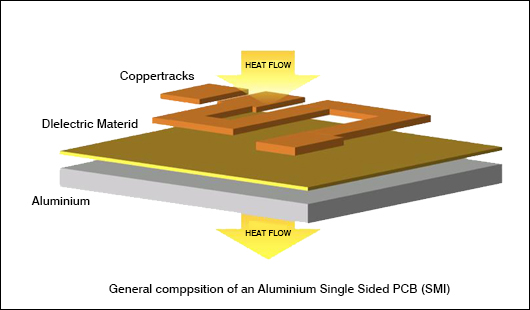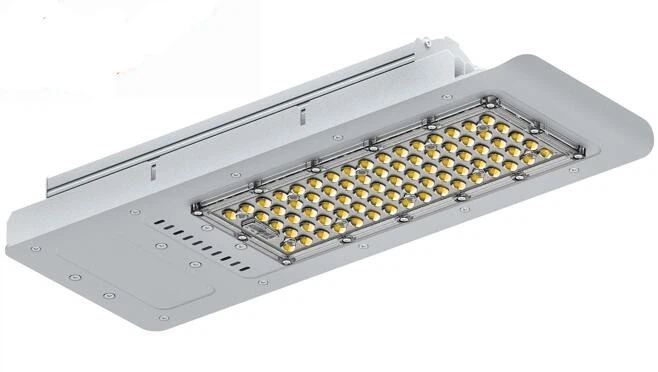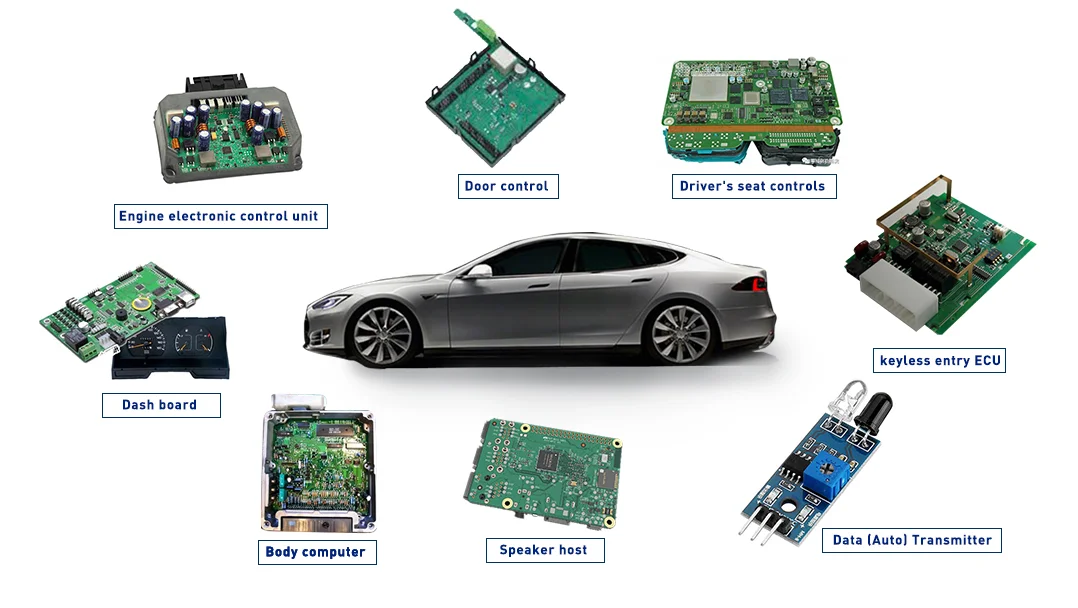If you're searching for aluminum PCB application examples or successful PCB projects, you're in the right place. Aluminum PCBs are a game-changer in modern electronics, offering exceptional thermal management and durability for high-power applications. In this blog, we dive into real-world case studies that highlight the aluminum PCB benefits, showcase how they help in solving thermal challenges, and share inspiring PCB design success stories. Whether you're an engineer or a designer, these examples will provide practical insights into leveraging aluminum PCBs for your next project.
What Are Aluminum PCBs and Why Do They Matter?
Aluminum PCBs, also known as metal core PCBs, are printed circuit boards with a metal base layer, typically aluminum, instead of the traditional FR4 material. This metal layer enhances heat dissipation, making them ideal for applications where thermal management is critical. But why are they so important? In high-power electronics, overheating can lead to performance issues or component failure. Aluminum PCBs tackle this by efficiently transferring heat away from sensitive components, ensuring reliability and longevity.
Beyond PCB thermal performance, aluminum PCBs offer mechanical strength and lightweight design, making them a top choice for industries like automotive, aerospace, and LED lighting. In the sections below, we explore real-world projects that demonstrate these advantages through detailed case studies.

Case Study 1: Aluminum PCBs in LED Lighting Systems
One of the most common aluminum PCB application examples is in LED lighting systems. LEDs generate significant heat during operation, and poor thermal management can reduce their lifespan or cause color shifts. A leading lighting manufacturer faced this challenge when designing high-power LED streetlights for urban environments. Their goal was to create a product that could withstand continuous operation in harsh conditions while maintaining brightness and efficiency.
By switching to aluminum PCBs, the manufacturer achieved remarkable results. The aluminum base layer provided a thermal conductivity of up to 2.0 W/m·K, far surpassing traditional FR4 boards (around 0.3 W/m·K). This allowed the heat generated by the LEDs to dissipate quickly, keeping the junction temperature below 85°C—a critical threshold for LED longevity. As a result, the streetlights achieved a lifespan of over 50,000 hours, even in extreme temperatures ranging from -20°C to 50°C.
This project is a prime example of solving thermal challenges with the aluminum PCB. It also reduced maintenance costs for the city by minimizing the need for frequent replacements. For engineers working on LED designs, this case underscores the importance of material selection in achieving both performance and cost-efficiency.

Case Study 2: Automotive Electronics with Aluminum PCBs
Another standout in successful PCB projects comes from the automotive industry, where reliability under high temperatures and vibrations is non-negotiable. A major automotive supplier needed a robust solution for the power control unit (PCU) in electric vehicles (EVs). The PCU manages high currents—often exceeding 100A—and generates substantial heat, making thermal management a top priority.
The design team opted for aluminum PCBs due to their ability to handle high thermal loads. With a dielectric layer thickness of just 0.1mm, the board achieved excellent heat transfer while maintaining electrical isolation. Testing showed that the aluminum PCB reduced the operating temperature of critical components by 15°C compared to a traditional FR4 board. This improvement directly enhanced the efficiency of the PCU, contributing to a 5% increase in the vehicle's overall energy efficiency.
This case study highlights the aluminum PCB benefits in demanding environments. For automotive engineers, it serves as a reminder that thermal design can impact not just component reliability but also the performance of the entire system.

Suggested Reading: Solving Heat Issues: How Aluminum PCBs Enhance Automotive Electronics
Case Study 3: Power Supplies for Industrial Equipment
Industrial power supplies often operate in environments with high ambient temperatures and heavy electrical loads, creating significant thermal challenges. In one notable project, a company designing power supplies for factory automation systems struggled with overheating in their units. The existing FR4-based PCBs caused frequent shutdowns due to thermal overload, disrupting production lines.
After transitioning to aluminum PCBs, the company saw a dramatic improvement. The aluminum substrate offered a thermal conductivity of 1.5 W/m·K, enabling the board to handle power densities of up to 10 W/in2 without exceeding safe temperature limits. Additionally, the design incorporated thermal vias to further enhance heat dissipation. The result? A 30% reduction in thermal-related failures and a boost in system uptime, directly impacting the factory's productivity.
This example of PCB design success stories shows how aluminum PCBs can transform industrial applications by addressing heat dissipation head-on. For designers, it emphasizes the value of integrating advanced materials and thoughtful layout strategies to meet rigorous performance demands.
Suggested Reading: Boosting Performance: The Role of Aluminum PCBs in Power Electronics
Key Benefits of Aluminum PCBs in Real-World Applications
These case studies reveal several consistent aluminum PCB benefits that make them a preferred choice across industries. Let’s break them down:
- Superior Thermal Management: With thermal conductivity values ranging from 1.0 to 2.0 W/m·K, aluminum PCBs excel at dissipating heat, protecting components in high-power applications.
- Durability and Strength: The metal core provides mechanical stability, making these boards resistant to physical stress and ideal for harsh environments like automotive or industrial settings.
- Lightweight Design: Despite their strength, aluminum PCBs are lightweight, which is crucial for applications like aerospace where every gram counts.
- Cost-Effectiveness: By reducing the need for additional cooling solutions (like heat sinks or fans), aluminum PCBs can lower overall system costs while boosting reliability.
These advantages are not just theoretical—they’re proven in the field, as shown by the projects above. For engineers, understanding these benefits can guide material choices and design approaches for optimal outcomes.
Overcoming Design Challenges with Aluminum PCBs
While aluminum PCBs offer incredible advantages, they come with unique design considerations. Addressing these challenges is key to unlocking their full potential in solving thermal challenges. Here are some common hurdles and how they were tackled in real-world projects:
1. Balancing Thermal Conductivity and Electrical Isolation: The dielectric layer between the aluminum base and copper traces must insulate electrically while allowing heat transfer. In the automotive PCU case, a thin 0.1mm dielectric layer achieved this balance, maintaining a breakdown voltage of over 2kV while ensuring efficient cooling.
2. Managing Higher Costs: Aluminum PCBs can be more expensive than FR4 boards due to material and manufacturing complexity. However, as seen in the LED streetlight project, the long-term savings from reduced maintenance and extended lifespan often outweigh initial costs.
3. Design Complexity: Working with metal core PCBs requires specialized manufacturing processes. In the industrial power supply case, collaboration with experienced PCB fabricators ensured precise thermal via placement and layer stacking, avoiding potential design flaws.
For designers, these examples highlight the importance of early planning and partnership with manufacturing experts to navigate the unique aspects of aluminum PCB design.
Tips for Implementing Aluminum PCBs in Your Projects
Inspired by these PCB design success stories? Here are actionable tips to help you integrate aluminum PCBs into your next project:
- Assess Thermal Needs Early: Identify the heat dissipation requirements of your application during the design phase. Use thermal simulation tools to predict performance and select the right aluminum PCB specifications.
- Optimize Layer Stackup: Work with a thin, high-quality dielectric layer to balance thermal conductivity and electrical isolation. Typical thicknesses range from 0.075mm to 0.15mm for most applications.
- Incorporate Thermal Vias: As seen in the industrial power supply case, thermal vias can significantly enhance heat transfer from components to the aluminum base.
- Partner with Experts: Collaborate with a trusted PCB manufacturer to ensure precise fabrication and assembly, especially for complex designs with high power demands.
- Test Under Real Conditions: Validate your design with prototypes tested in environments that mimic actual operating conditions, ensuring reliability before full-scale production.
By following these steps, you can maximize the benefits of aluminum PCBs and avoid common pitfalls, paving the way for a successful project.
Future Trends: The Growing Role of Aluminum PCBs
As electronics continue to evolve, the demand for efficient thermal management solutions is only increasing. Aluminum PCBs are poised to play a bigger role in emerging fields like 5G technology, renewable energy systems, and advanced medical devices. For instance, in 5G base stations, high-frequency signals and dense component layouts create significant heat, making aluminum PCBs a natural fit. Similarly, solar inverters in renewable energy systems benefit from their ability to handle high power loads under varying temperatures.
These trends suggest that the aluminum PCB application examples we’ve discussed are just the beginning. Staying ahead of the curve means exploring how this technology can address the unique challenges of tomorrow’s innovations.

Conclusion: Why Aluminum PCBs Are a Smart Choice
From LED lighting to automotive electronics and industrial power supplies, the case studies in this blog demonstrate the transformative power of aluminum PCBs. These successful PCB projects showcase how aluminum PCBs deliver unmatched thermal performance, durability, and efficiency—key factors in tackling modern design challenges. Whether you’re looking to solve overheating issues or enhance system reliability, the aluminum PCB benefits are clear and proven in real-world applications.
At ALLPCB, we’re committed to helping engineers and designers bring their ideas to life with cutting-edge solutions. By understanding these PCB design success stories, you’re better equipped to make informed decisions and achieve outstanding results in your projects. Ready to explore the potential of aluminum PCBs? Start by evaluating your thermal needs and partnering with a trusted manufacturer to turn your vision into reality.
 ALLPCB
ALLPCB







